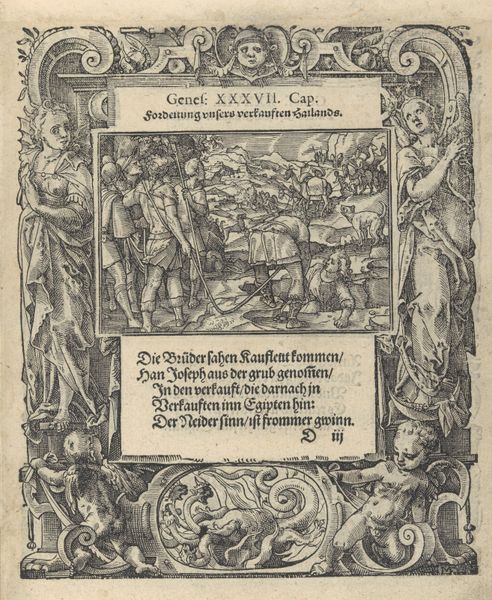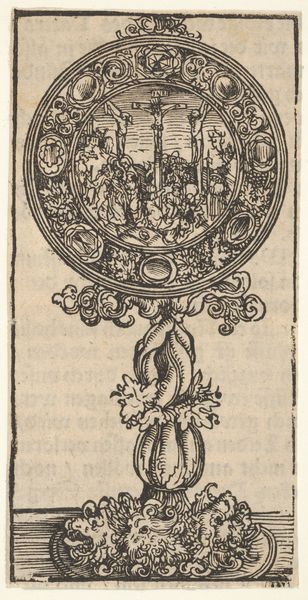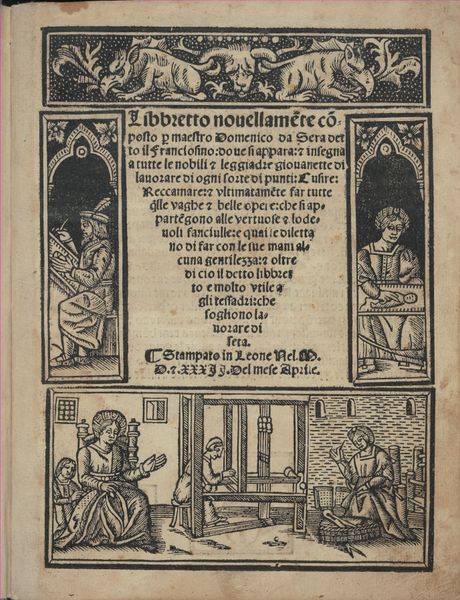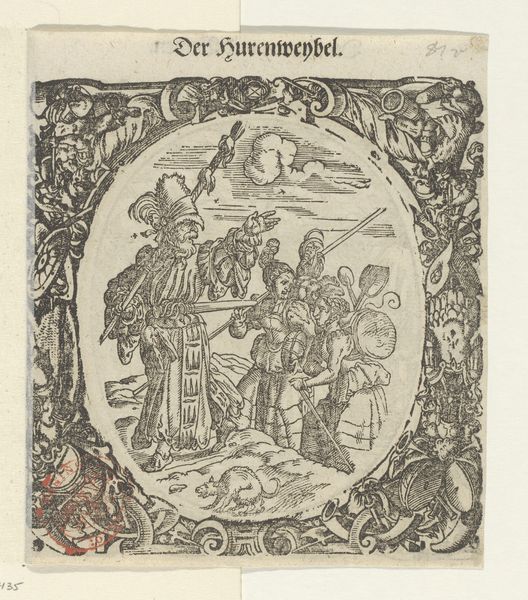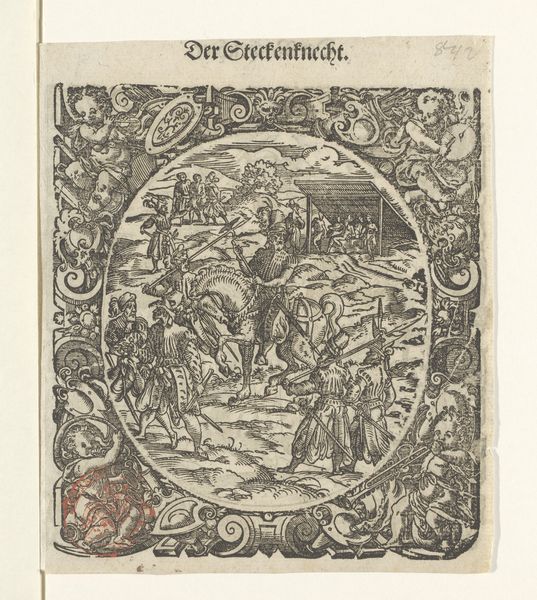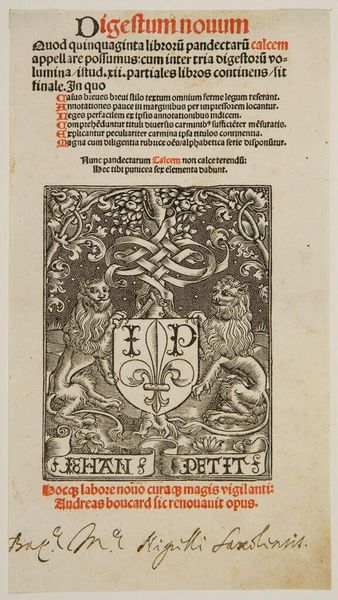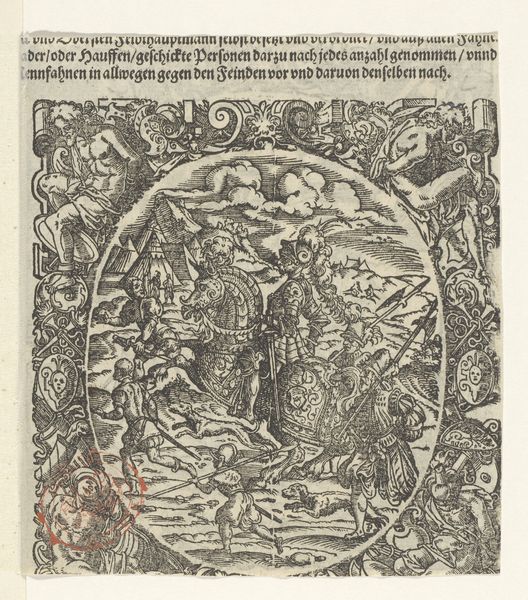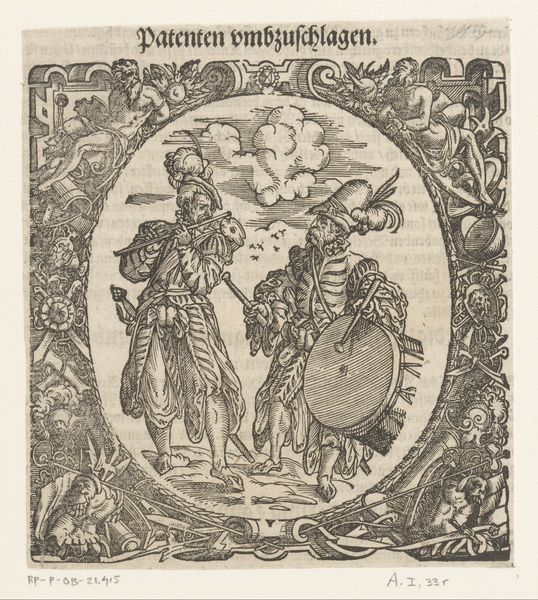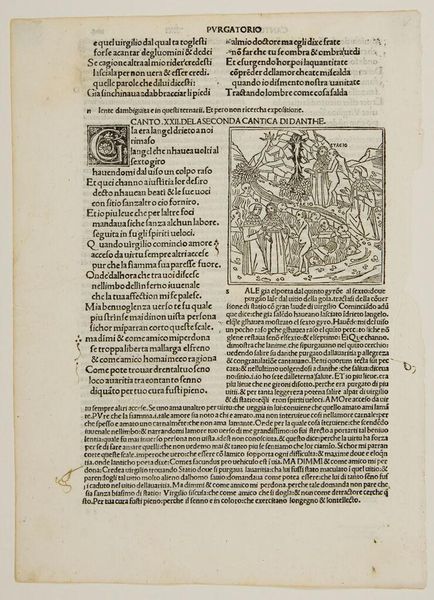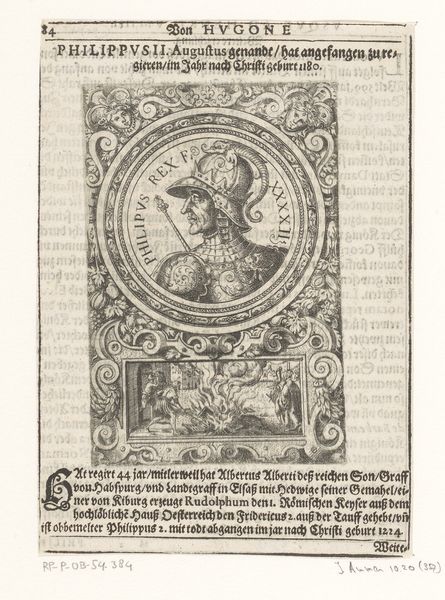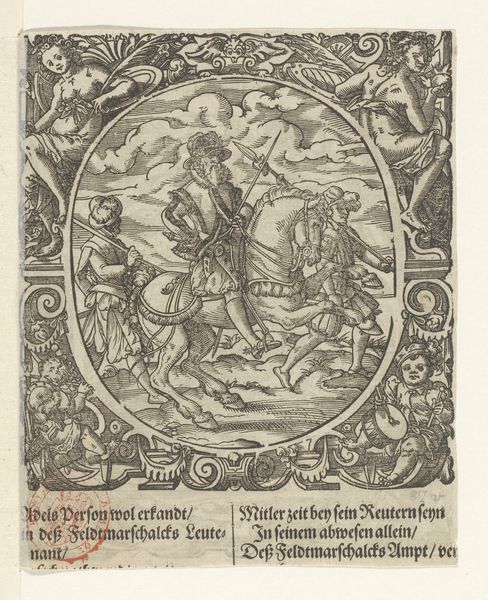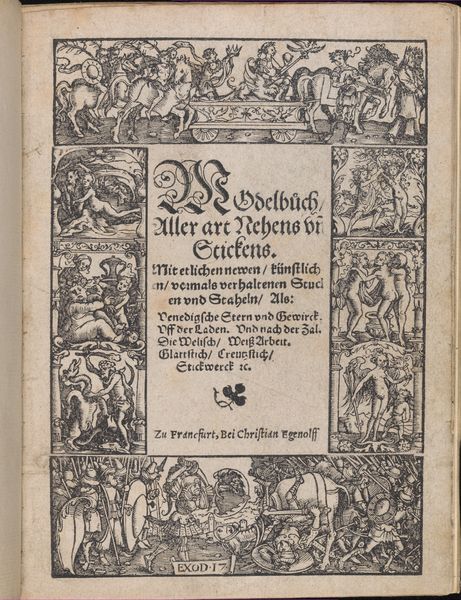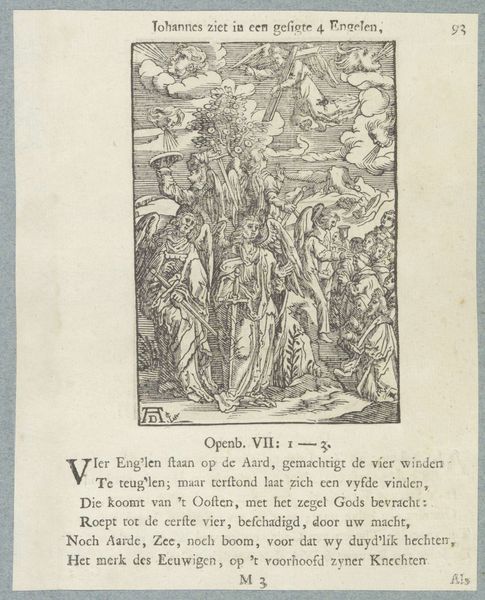
Von Ungluckes Fal, title page chapter 37 from "Sebastian Brandt, Das Narrenschrift" 1485 - 1528
0:00
0:00
drawing, print, woodcut
#
drawing
#
medieval
# print
#
figuration
#
woodcut
#
northern-renaissance
Dimensions: sheet: 8 1/4 x 5 11/16 in. (21 x 14.5 cm)
Copyright: Public Domain
Curator: This woodcut, likely created between 1485 and 1528, presents the title page for chapter 37 of "Das Narrenschiff" or "The Ship of Fools," a satire by Sebastian Brant, brought to us probably by Albrecht Durer and is currently housed at The Metropolitan Museum of Art. Editor: The first thing that strikes me is its chaotic energy. The figures are caught in mid-action around a large wheel, and there's a sense of imbalance, maybe even a dark humor. Curator: Yes, note the intricate border with its twisting floral motifs, setting the stage for a compelling compositional contrast with the central image. The image showcases human figures clinging to a turning wheel, the Wheel of Fortune, suggesting the unpredictable nature of fate. The figures are caricatures, suggesting different types of folly or vice. Editor: Absolutely. Consider how this intersects with social dynamics of the time. Brant's satire critiques the follies of different social classes and professions. So the image likely reflects existing power structures and societal inequalities, offering a commentary on those struggling for power or relevance. It portrays those vulnerable and precarious on that same turning wheel. Curator: True, but focus also on the artistic execution. Durer or his peers employs strong lines and bold contrasts to create a striking visual effect. This exemplifies the printmaking techniques characteristic of the Northern Renaissance. Look how the figures are meticulously detailed. Editor: And through this technical artistry we witness a potent symbolic narrative unfold before us, of societal structure, the vagaries of fate, of life's inescapable tumbles and fleeting ascents within inequitable social systems. These images are more than mere pictures; they embody shared cultural understanding and are often an encoded form of protest. Curator: Ultimately, what truly resonates is the craftsmanship: an understanding of lines and visual impact, even beyond its societal context, that continues to offer audiences of this piece continued dialogue centuries after its inception. Editor: Indeed. Reflecting on it all, it speaks to the power of art as social commentary, provoking us to question the structures around us, perhaps even now as it did in 15th-century society.
Comments
No comments
Be the first to comment and join the conversation on the ultimate creative platform.
